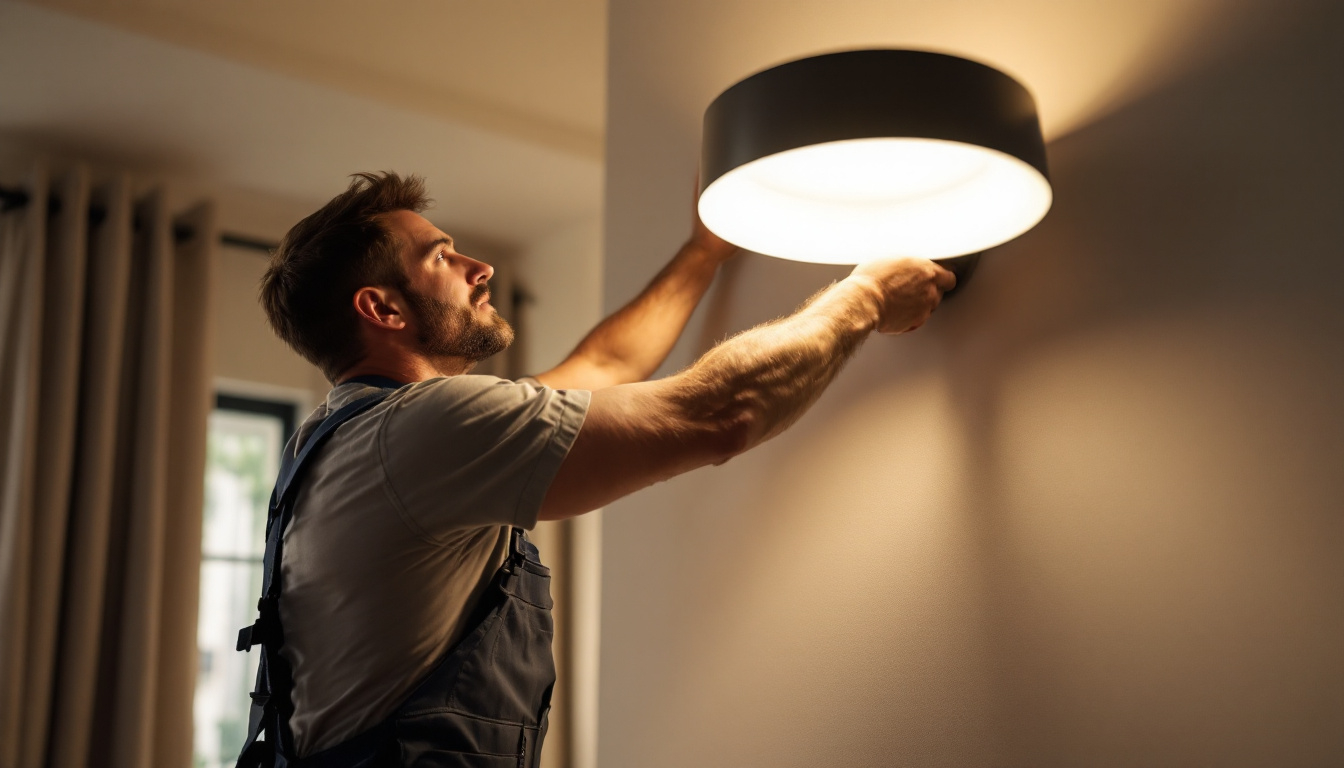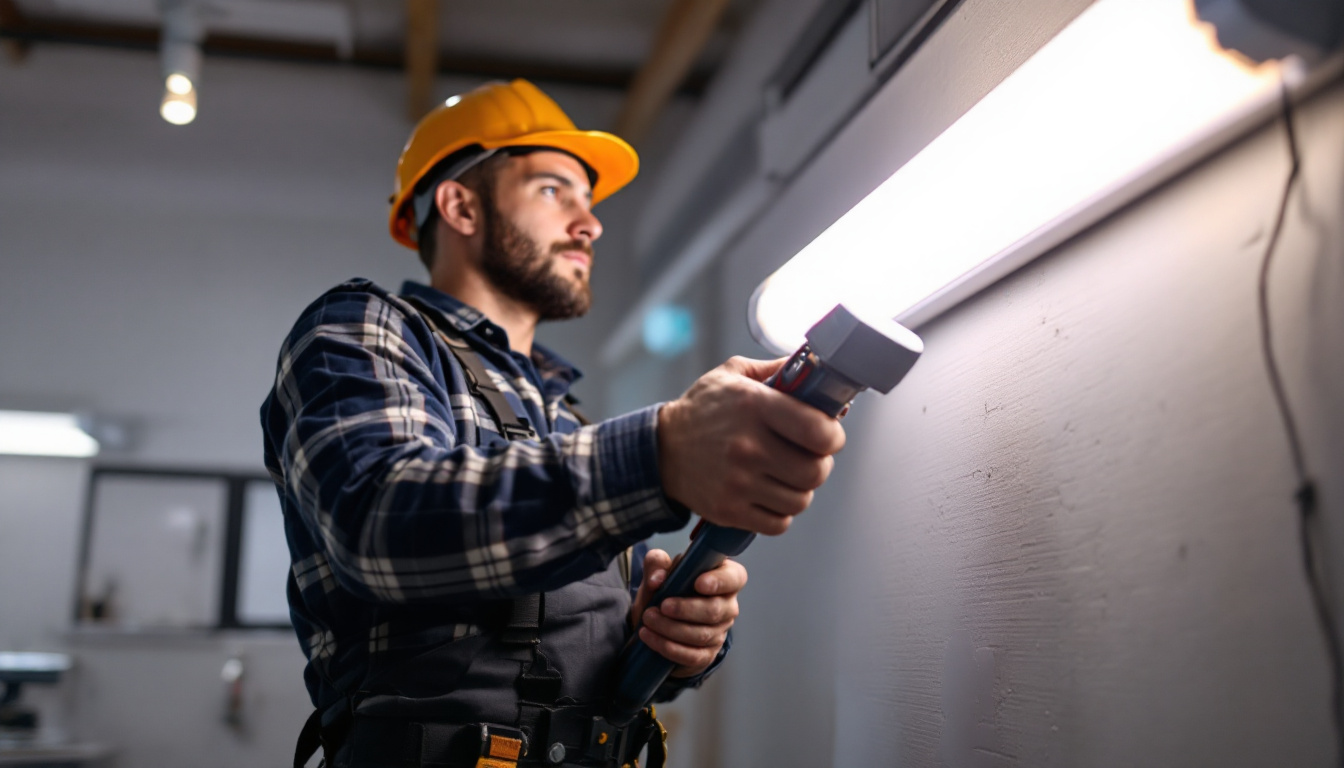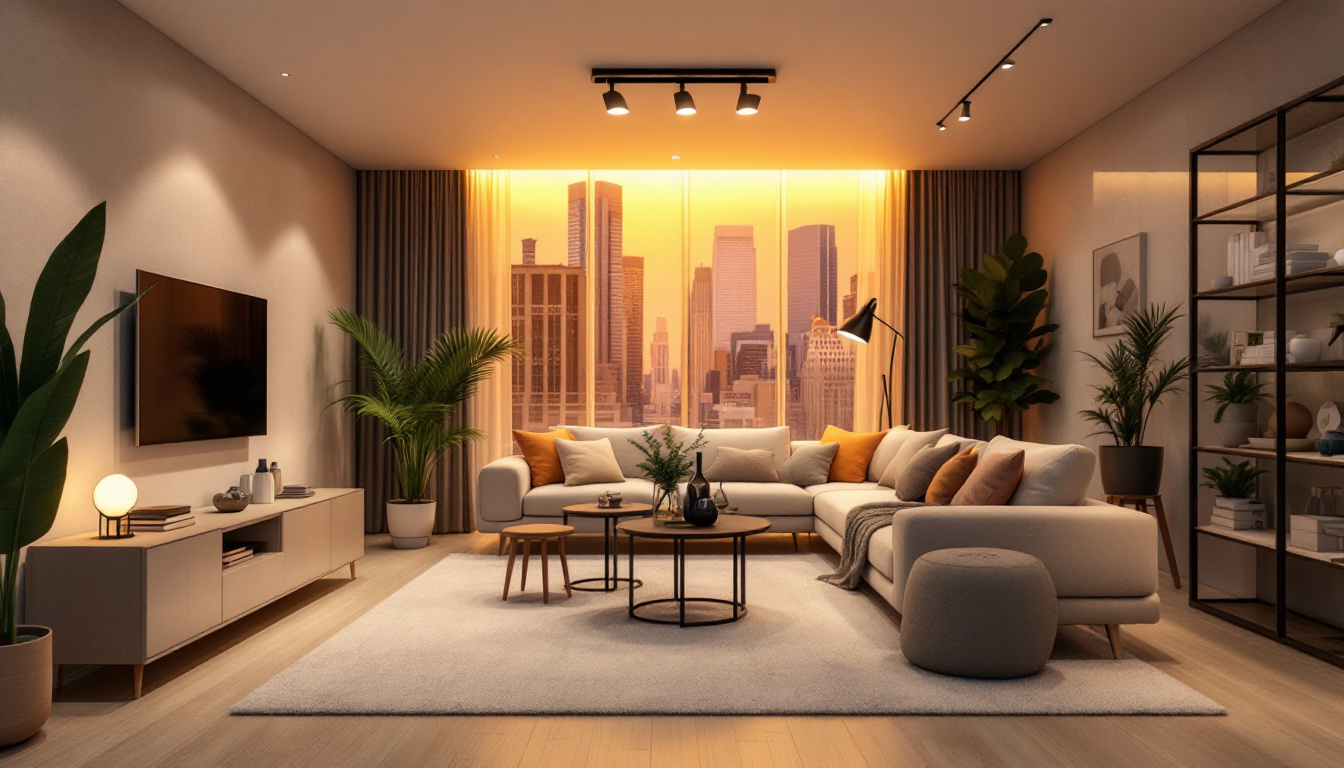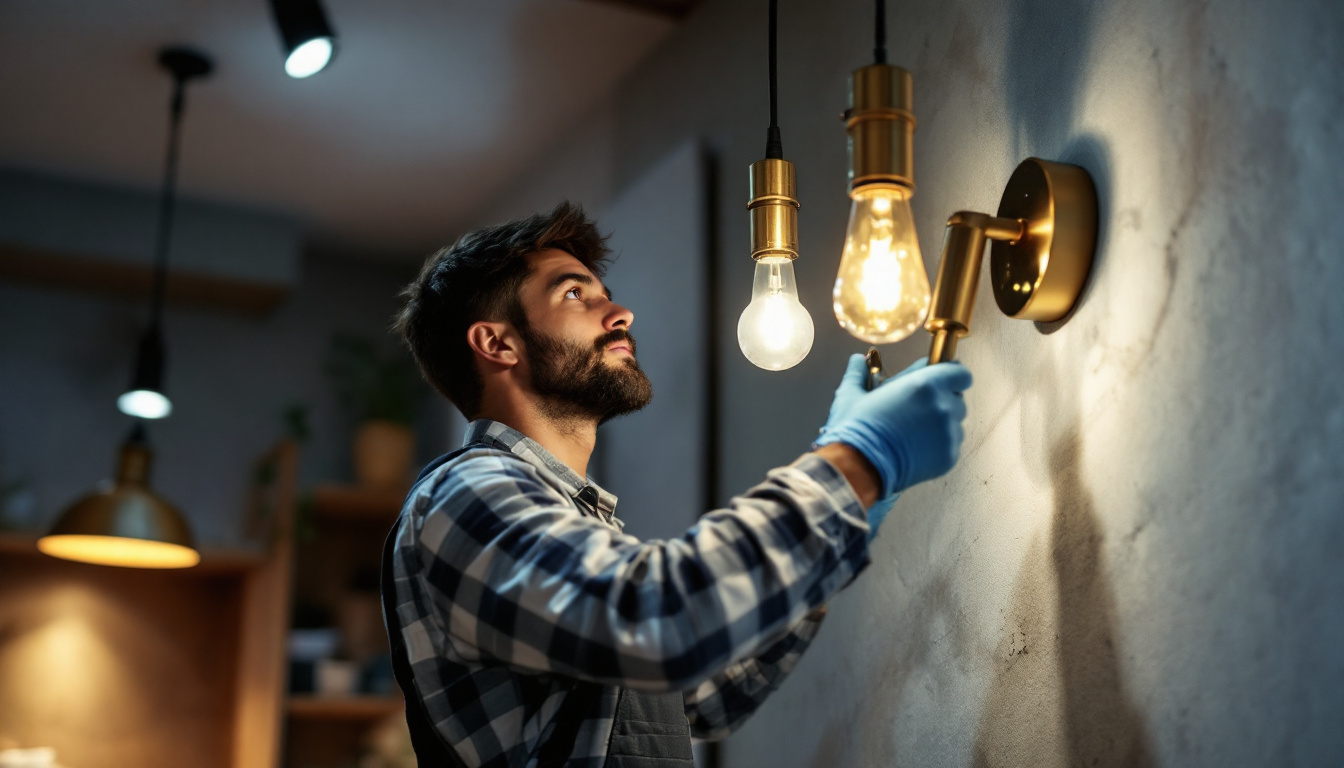

In the realm of lighting design, large wall light fixtures have become a staple for contractors looking to enhance both functionality and aesthetics in residential and commercial spaces. These fixtures not only provide ample illumination but also serve as striking design elements that can transform an environment. However, the complexity of selecting and installing these fixtures can present challenges. This article aims to simplify the process for lighting contractors, offering insights into selection, installation, and maintenance.
Large wall light fixtures come in various styles, sizes, and functionalities. They can range from traditional sconces to modern LED panels, each serving different purposes and fitting various design themes. Understanding the types available is crucial for contractors when advising clients or making selections for projects.
When categorizing large wall light fixtures, several types emerge, each with unique characteristics and applications. These include:
Incorporating large wall light fixtures into a design scheme requires careful consideration of several factors. The style of the fixture should complement the overall decor, while the size must be proportionate to the wall space. Additionally, the light output should align with the intended use of the area.
Lighting contractors should also consider the color temperature of the bulbs used in these fixtures. Warmer tones can create a cozy atmosphere, while cooler tones may be more suitable for workspaces. Understanding these nuances allows contractors to make informed recommendations to clients.
Furthermore, the placement of large wall light fixtures plays a critical role in their effectiveness. For instance, positioning sconces at eye level can enhance their visual appeal and functionality, while strategically placing LED panels can optimize light distribution across a room. In spaces with high ceilings, oversized fixtures can draw the eye upward, creating a sense of grandeur and spaciousness. Additionally, layering different types of lighting—such as combining wall fixtures with ceiling lights—can create a dynamic and inviting environment.
Another important aspect to consider is the materials and finishes of the fixtures. From polished metals to rustic woods, the material can significantly impact the overall aesthetic. For example, a brass wall sconce may evoke a vintage charm, while a matte black LED panel can lend a contemporary edge. Selecting the right finish not only enhances the visual appeal but also ensures durability and maintenance ease, making it a key consideration for long-term satisfaction in any lighting project.
Proper installation of large wall light fixtures is essential for both safety and functionality. Contractors must adhere to specific guidelines to ensure that the fixtures are installed correctly and efficiently.
Before beginning the installation process, contractors should gather the necessary tools and equipment. Common tools include a drill, screwdriver, wire stripper, and voltage tester. Additionally, having a level and measuring tape on hand can help ensure that the fixtures are installed straight and at the correct height.
It is also advisable to have safety equipment, such as gloves and goggles, to protect against potential hazards during installation. Beyond these basic tools, a stud finder can be invaluable for locating the best mounting points on the wall, particularly in drywall installations where securing to a stud is crucial for stability. Furthermore, having a flashlight or work light can illuminate the area, especially in dimly lit spaces, ensuring that the contractor can see clearly while working.
The installation process can vary depending on the type of fixture and the existing electrical setup. However, a general step-by-step approach includes:
In addition to these steps, contractors should also consider the aesthetic aspects of installation. The placement of fixtures can significantly impact the overall ambiance of a room. For instance, when installing multiple fixtures, it’s beneficial to plan their arrangement to create a balanced and harmonious lighting effect. This may involve adjusting the height or spacing of the fixtures to avoid harsh shadows or overly bright spots. Moreover, understanding the type of bulb and its color temperature can help achieve the desired mood, whether it be warm and inviting or bright and energizing.
Lastly, contractors should keep in mind the importance of adhering to local building codes and regulations. These codes often dictate specific requirements for electrical installations, including the types of fixtures allowed in certain areas, such as bathrooms or outdoor spaces. Ensuring compliance not only enhances safety but also protects the contractor from potential liabilities. Regularly reviewing these codes can help contractors stay informed about any changes that may affect their work.
Regular maintenance of large wall light fixtures is crucial for longevity and optimal performance. Contractors can provide valuable guidance to clients on how to care for their fixtures, ensuring they remain functional and visually appealing.
Dust and grime can accumulate on fixtures over time, affecting their brightness and overall appearance. Contractors should recommend a cleaning schedule that includes gently wiping down fixtures with a soft cloth and mild detergent. For fixtures with intricate designs, a soft brush may be necessary to reach crevices.
Additionally, contractors should advise clients on the importance of checking bulbs regularly. Replacing burnt-out bulbs promptly not only ensures consistent lighting but also prevents potential damage to the fixture itself.
Periodically, it is essential to conduct electrical safety checks on large wall light fixtures. This includes inspecting for frayed wires, loose connections, or any signs of wear. If any issues are detected, it is crucial to address them immediately to prevent electrical hazards.
Contractors can also educate clients on the importance of using the correct wattage for bulbs to avoid overheating and potential fire risks.
Selecting the appropriate large wall light fixtures for various environments can significantly impact the overall functionality and aesthetic appeal of a space. Different areas have unique lighting needs, and understanding these can help contractors make the best choices.
In residential settings, large wall light fixtures can enhance the ambiance of living rooms, dining areas, and hallways. For example, a pair of elegant sconces can frame a doorway or artwork, adding a touch of sophistication. In contrast, brighter LED panels may be suitable for home offices or kitchens, where task lighting is essential.
Contractors should also consider the style of the home when recommending fixtures. A modern home may benefit from sleek, minimalist designs, while a traditional home might call for more ornate fixtures that complement classic decor.
In commercial environments, large wall light fixtures play a crucial role in creating a welcoming atmosphere while providing adequate lighting for functionality. Retail spaces may utilize fixtures that highlight merchandise, while restaurants often opt for softer, ambient lighting to enhance the dining experience.
Contractors should also be aware of local building codes and regulations regarding commercial lighting. Ensuring compliance not only enhances safety but also avoids potential legal issues.
The lighting industry is constantly evolving, with new trends emerging that can influence the selection of large wall light fixtures. Staying informed about these trends can help contractors provide cutting-edge solutions to their clients.
With an increasing focus on sustainability, energy-efficient lighting solutions are gaining popularity. Large wall light fixtures that utilize LED technology not only reduce energy consumption but also have a longer lifespan compared to traditional bulbs. Contractors should emphasize the benefits of energy-efficient options to clients, highlighting potential cost savings on energy bills.
Another trend gaining traction is the integration of smart technology into lighting fixtures. Large wall light fixtures that can be controlled via smartphone apps or voice commands offer convenience and flexibility. Contractors should consider recommending these solutions, especially for tech-savvy clients looking to enhance their home automation systems.
Large wall light fixtures are an essential component of modern lighting design, offering both functionality and aesthetic appeal. By understanding the various types available, adhering to proper installation guidelines, and providing maintenance advice, lighting contractors can simplify the process for their clients. Additionally, staying informed about trends and innovations in the industry allows contractors to offer cutting-edge solutions that meet the evolving needs of their clients.
Ultimately, the right large wall light fixture can transform a space, creating an inviting atmosphere while ensuring adequate lighting. By mastering the complexities of selection, installation, and maintenance, lighting contractors can position themselves as trusted experts in the field, enhancing their reputation and fostering long-term client relationships.
Ready to elevate your lighting projects with the finest selection of large wall light fixtures? Look no further than LumenWholesale. Our commitment to quality and affordability ensures that you have access to the best spec-grade lighting products at wholesale prices that simply can’t be beaten. Say goodbye to middleman markups and hello to a vast array of reliable, high-performance options that meet the highest industry standards. Plus, with free shipping on bulk orders, you can stock up on premium lighting without any hidden fees. Don’t compromise on quality or value—visit LumenWholesale today and discover the perfect blend of quality, affordability, and convenience for all your lighting needs.

Discover why purchasing wall sconces in bulk from local distributors might not be the best choice.

Discover the must-have 4-foot fluorescent tube lights that every lighting contractor needs in their toolkit.

Discover the transformative role of LED recessed light bulbs in the lighting industry.

Discover how partnering with lighting contractors can illuminate new opportunities for your business.
Get notified when NEW deals are released.
Optimize your budget with wholesale discounts.
Only top-quality, specification-grade lighting products.
No additional costs at checkout - what you see is what you pay.
We understand the unique needs of contractors.